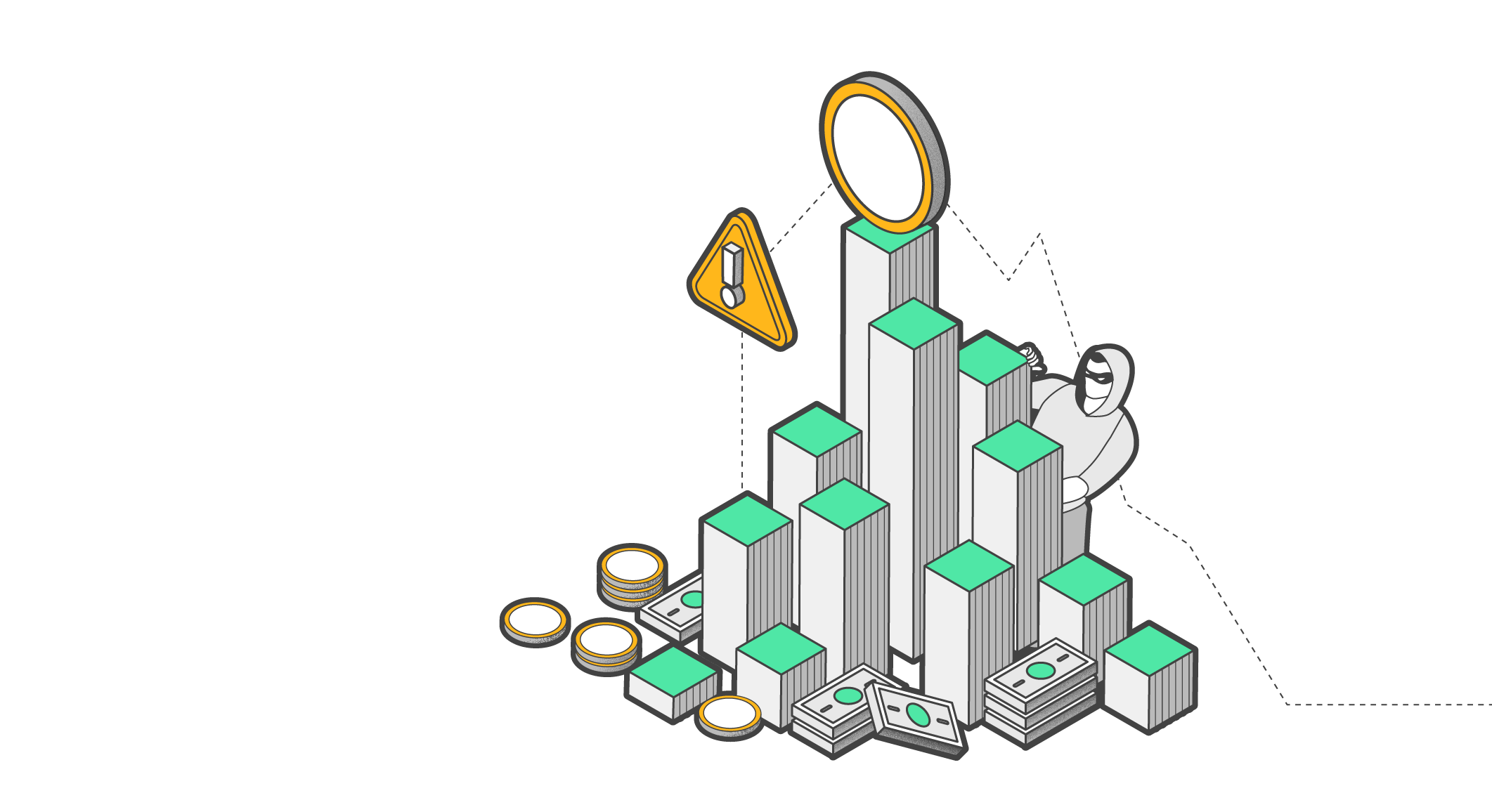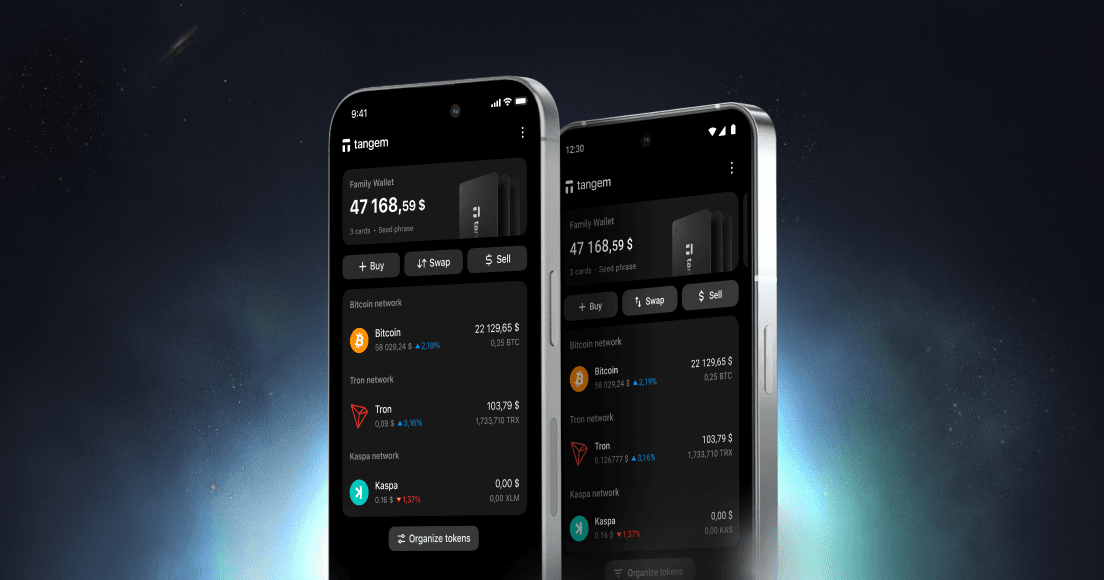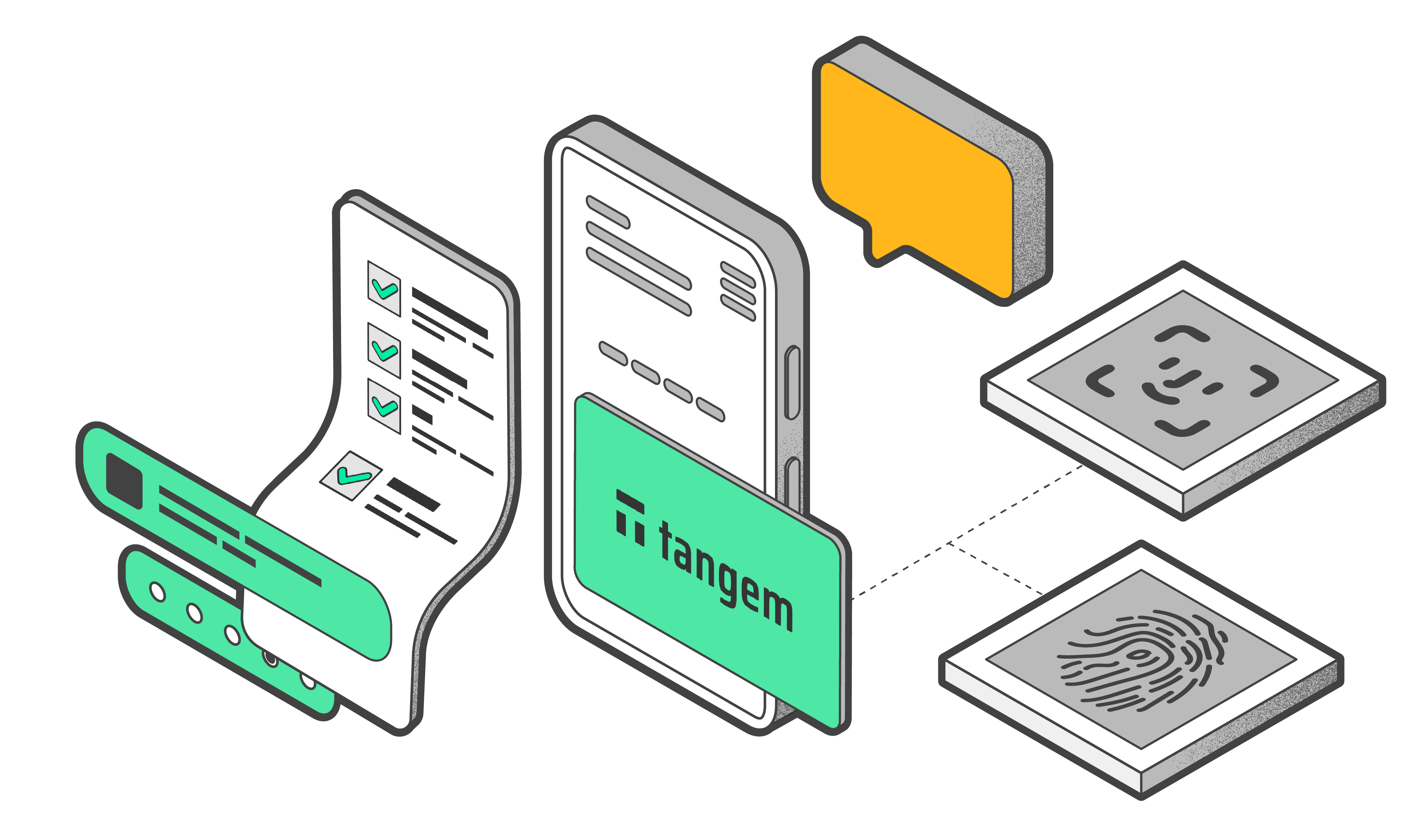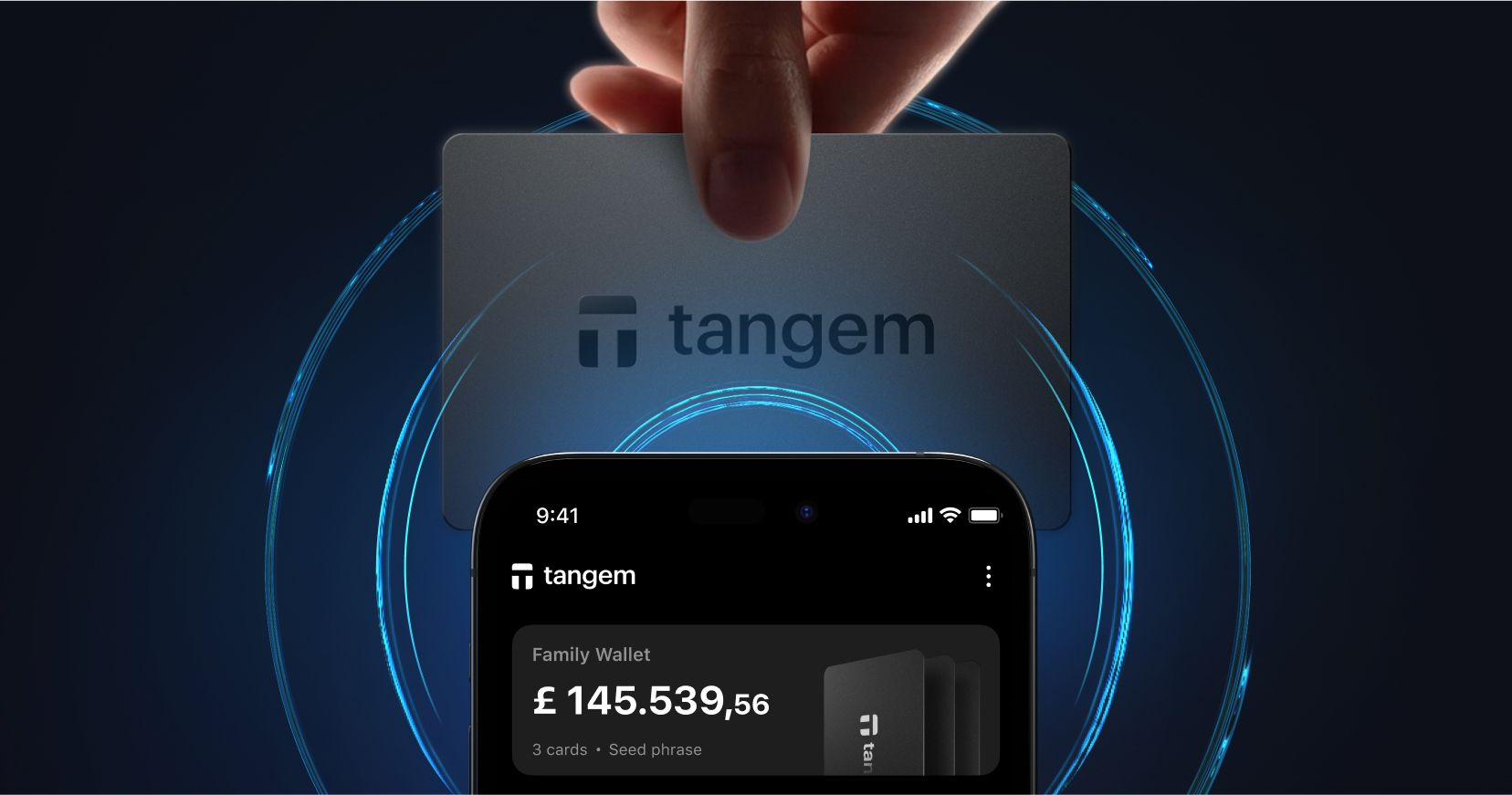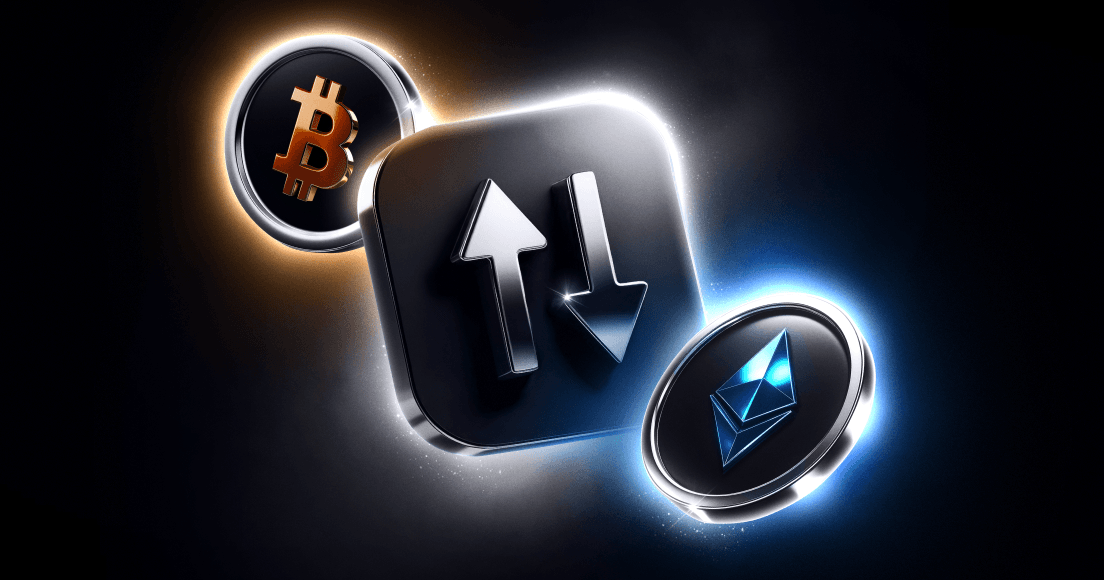
How to Trade Crypto: Updated Guide for Beginners (2025)
A beginner-friendly guide to crypto trading featuring key insights on market trends, security, and profitable strategies.

- TL;DR
- Cryptocurrency trading and its growing popularity
- What is cryptocurrency trading?
- Differences between cryptocurrency trading and traditional trading (e.g., stocks, forex)
- Key terms in crypto trading
- How to start trading cryptocurrency
- How to Manage Risk in Crypto Trading
- Crypto Trading Tools and Resources
- Pros and Cons of Crypto Trading
- FAQs About Crypto Trading
Cryptocurrency trading has emerged as one of the most dynamic and exciting financial markets of the 21st century. Since the inception of Bitcoin in 2009, the crypto market has grown exponentially, encompassing thousands of digital assets, including Ethereum, Ripple, Solana, and many others.
The decentralized nature of cryptocurrencies, combined with their potential for high returns, has attracted a diverse range of participants, from individual retail traders to institutional investors.
TL;DR
- Cryptocurrency trading has become one of the most dynamic and exciting financial markets of the 21st century.
- Cryptocurrencies have high volatility and the ability to profit from both rising and falling markets.
- Cryptocurrencies are traded on centralized exchanges, decentralized exchanges, and peer-to-peer platforms.
- Choosing the right cryptocurrencies for trading is essential for success and minimizing risks.
- Fundamental and technical analysis help in making informed decisions when trading.
- Different trading strategies correspond to different trading styles and time commitments.
- Risk management involves using stop-loss and take-profit orders, diversifying your portfolio, adjusting position sizes, and avoiding excessive leverage.
- Tools and resources for crypto trading include platforms for tracking the crypto market, portfolio management apps, educational blogs, and crypto communities.
Cryptocurrency trading and its growing popularity
The appeal of cryptocurrency trading lies in its 24/7 market availability, high volatility, and the opportunity to profit from both rising and falling markets. Unlike traditional financial markets, the crypto market is not bound by geographical limitations or traditional banking hours, making it accessible to anyone with an internet connection.
This growing popularity is also fueled by advancements in blockchain, increased institutional adoption, and the acceptance of crypto assets as a legitimate form of investment. However, with this growth comes increased complexity and risk, making it essential for you to equip yourself with the right strategy.
Tangem Wallet slips into your pocket like any other card but protects your crypto assets like a fortress. It has no cables or batteries. Just tap to secure it in an instant.
Ready for real peace of mind? Get it here.
Why this guide is essential for beginners
For newcomers, cryptocurrency trading can be overwhelming, with its unique terminology, complex technologies, and volatile market conditions. This guide will provide a solid foundation, explaining the basics, how trading works, and the tools and strategies needed to get started.
What is cryptocurrency trading?
Cryptocurrency trading involves buying, selling, and exchanging digital currencies to make a profit. Traders use various strategies and tools to capitalize on market volatility, leveraging price fluctuations to generate returns.
Cryptocurrency trading can take place on centralized exchanges (like Binance or Coinbase), decentralized exchanges (like Uniswap), or even peer-to-peer platforms. The assets traded include well-known cryptocurrencies like Bitcoin (BTC) and Ethereum (ETH), as well as altcoins (alternative coins) and tokens representing various blockchain projects and popular memes.
Differences between cryptocurrency trading and traditional trading (e.g., stocks, forex)
While cryptocurrency trading shares some similarities with traditional trading in stocks or forex, there are key differences that set it apart:
- Market hours: Stock and forex markets operate during specific hours (e.g., 9:30 AM to 4:00 PM EST for the NYSE). Cryptocurrency markets are open 24/7, allowing traders to buy and sell digital assets at any time.
- Volatility: Stocks and forex tend to have relatively stable price movements, with occasional volatility. Cryptocurrencies are known for their extreme volatility, with prices capable of swinging dramatically within minutes.
- Regulation: Traditional markets are heavily regulated by government bodies (e.g., SEC in the U.S.). Crypto markets are less regulated, though this is changing as governments around the world begin to implement crypto-specific regulations.
- Asset ownership: When you buy stocks, you own a share of the company. When you buy cryptocurrencies, you own a digital asset that exists on a blockchain.
- Liquidity: Traditional markets generally have high liquidity, especially for major stocks and currency pairs. Liquidity varies widely in crypto; major cryptocurrencies like Bitcoin and Ethereum are highly liquid, while smaller altcoins may suffer from low liquidity.
- Technology: Traditional Markets rely on established financial systems and infrastructure. Crypto markets depend on blockchain technology, which offers transparency, security, and decentralization.
Key terms in crypto trading
To navigate cryptocurrency trading, you must understand some key terms:
- Spot trading: Buying or selling cryptocurrencies for immediate delivery. The transaction is settled "on the spot," meaning you own the asset once the trade is complete.
- Futures trading: Involves agreeing to buy or sell a cryptocurrency at a predetermined price at a specific future date. Futures contracts allow traders to speculate on price movements without owning the underlying asset.
- HODLing: A term derived from a misspelled word "hold," referring to the strategy of holding onto cryptocurrencies for the long term, regardless of market volatility. HODLers believe in the long-term potential of their assets.
- Margin trading: Borrowing funds to trade larger positions than your account balance would normally allow. This can amplify both gains and losses.
- Leverage: Using borrowed capital to increase the potential return of an investment. Leverage is common in futures and margin trading.
- Altcoins: Any cryptocurrency other than Bitcoin. Examples include Ethereum (ETH), Ripple (XRP), and Solana (SOL).
- Wallet: A tool that allows you to store, send, and receive cryptocurrencies. Wallets can be hardware-based (physical devices) or software-based (applications).
- Exchange: A platform where you can buy, sell, and trade cryptocurrencies. Exchanges can be centralized (CEX) or decentralized (DEX).
- Blockchain: The underlying technology of cryptocurrencies; a decentralized ledger that records all transactions across a network of computers.
- Volatility: The degree of variation in the price of a cryptocurrency over time. High volatility can lead to significant price swings, offering traders both opportunities and risks.
How to start trading cryptocurrency
Step 1: Choose a cryptocurrency exchange or Wallet
Choosing the right cryptocurrency exchange or wallet is the first and most crucial step in your trading journey. Your choice will determine the range of assets you can trade, the fees you'll pay, and the overall security of your funds. Here are the key factors to consider when choosing an exchange:
- Security:
- Look for platforms with robust security measures, such as two-factor authentication (2FA), cold storage for funds, and insurance against hacks.
- Check their history for any security breaches and how they were handled.
- Fees:
- Exchanges charge various fees, including trading fees, withdrawal fees, and deposit fees. Compare these fees across different platforms to find the most cost-effective option.
- Some exchanges offer reduced fees for high-volume traders or for using their native coins (e.g., Binance Coin on Binance).
- Ease of Use:
- The user interface should be intuitive and easy to navigate, especially for beginners. Look for crypto platforms with mobile apps and responsive customer support.
- Some exchanges offer advanced features like margin trading and futures, which may require a steeper learning curve.
- Supported coins:
- Ensure the exchange or wallet supports the cryptocurrencies you want to trade. Major exchanges like MEXC and KuCoin offer a wide range of coins, while others may have a more limited selection.
- If you're interested in trading altcoins, make sure the exchange or wallet has them.
Top Crypto Exchanges in 2025:
- Binance: Known for its extensive range of supported coins, low fees, and advanced trading features.
- Coinbase: Popular among beginners for its user-friendly interface and strong security measures.
- Kraken: Offers a good balance of security, low fees, and a wide range of supported coins.
- Bybit: Known for its futures platform and high liquidity.
- KuCoin: Offers a wide range of altcoins and competitive fees.
Step 2: Create and Verify Your Account
Once you've chosen an exchange, the next step is to create and verify your account. Here's what you need to know:
- Registration Process:
- Visit the exchange's website or download their mobile app.
- Sign up by providing your email address, creating a password, and agreeing to the terms of service.
- Some exchanges may require additional information, such as your phone number.
KYC Requirements:
Know Your Customer (KYC) is a regulatory requirement that involves verifying your identity. This usually includes submitting a government-issued ID, proof of address, and sometimes a selfie.
KYC verification can take anywhere from a few minutes to several days, depending on the exchange and the volume of requests. Completing KYC is essential for accessing higher withdrawal limits and additional features.
- Security Measures:
Enable two-factor authentication (2FA) to add an extra layer of security to your account. Use a strong, unique password, and consider using a password manager to keep track of it.
Step 3: Fund Your Account
After your account is set up and verified, the next step is to fund it. Here's how to do it:
Accepted Payment Methods:
- Bank Transfer: A common method for depositing fiat currency (e.g., USD, EUR). Bank transfers are usually secure but can take several business days to process.
- Credit/Debit Card: Offers instant deposits but often comes with higher fees. Some exchanges also charge additional fees for card transactions.
- Crypto Deposits: You can transfer cryptocurrencies from another wallet or CEX to your new account. This method is usually faster and has lower fees compared to fiat deposits.
- Other Methods: Some exchanges accept PayPal or other e-wallets, though these methods may have higher fees.
Importance of Choosing the Right Funding Method
- Fees: Different funding methods come with different fees. Compare the costs associated with each method to minimize expenses.
- Speed: If you need to start trading quickly, opt for methods that offer instant deposits, such as credit/debit cards or crypto transfers.
- Security: Ensure that the funding method you choose is secure and that you're comfortable with the level of risk involved.
Funding Your Account:
- Navigate to the "Deposit" or "Funds" section of the exchange.
- Select the currency (fiat or crypto) you wish to deposit.
Follow the instructions provided by the exchange to complete the deposit. For fiat deposits, this may involve linking your bank account or entering card details. For crypto deposits, you'll need to send the funds to the provided wallet address.
Step 4: Choose a Cryptocurrency to Trade
Selecting the right cryptocurrency to trade is a critical decision that can significantly impact your crypto trading success. Here are some tips to help you make an informed choice:
Market cap: Market capitalization (market cap) is the total value of a cryptocurrency, calculated by multiplying the current price by the total supply of coins.
Cryptocurrencies with a higher market cap (e.g., Bitcoin, Ethereum) are generally considered more stable and less volatile than those with a lower market cap. However, lower-market-cap coins can offer higher growth potential, albeit with increased risk.
- Liquidity: Liquidity refers to how easily a cryptocurrency can be bought or sold without affecting its price. High liquidity ensures that you can enter and exit positions quickly, which is crucial for short-term cryptocurrency trading. Major coins like Bitcoin and Ethereum typically have high liquidity.
- Utility: Utility refers to a cryptocurrency's real-world applications and use cases. Cryptocurrencies with strong utility and active development teams are more likely to sustain long-term value. Research the project's whitepaper, development roadmap, and community support to gauge its utility.
- Community and development: A strong, active community and a dedicated development team are indicators of a healthy project. Look for regular updates, active social media channels, and community engagement.
Step 5: Learn market analysis
To trade cryptocurrencies effectively, you need to understand and utilize both fundamental and technical analysis. These analytical approaches will help you make informed decisions.
- Fundamental analysis: Fundamental analysis involves evaluating the intrinsic value of a cryptocurrency by examining related economic, financial, and other qualitative and quantitative factors. Its key components include:
- Project evaluation: Assess the project's whitepaper, team, technology, and use case. Look for innovative solutions, strong leadership, and a clear roadmap.
- News impact: Stay updated with the latest news and developments in the crypto space. News about regulatory changes, partnerships, technological advancements, and market trends can significantly impact prices.
- Adoption and partnerships: Evaluate the level of adoption and any strategic partnerships the project has secured. Higher adoption and strong partnerships can drive long-term value.
- Market sentiment: Gauge the overall market sentiment using tools like the Crypto Fear & Greed Index. Market sentiment can influence price movements and trading volumes.
- Technical analysis: Technical analysis involves analyzing statistical trends gathered from trading activity, such as price movement and volume, to predict future price movements. Its key components include:
- Charts: Use price charts to visualize historical price movements. Common chart types include line charts, bar charts, and candlestick charts.
- Patterns: Identify recurring patterns that can indicate potential price movements. Common patterns include head and shoulders, double tops and bottoms, and triangles.
- Indicators: Use technical indicators to gain insights into market trends and momentum. Popular indicators include:
- Moving Averages (MA): Helps smooth out price data to identify trends.
- Relative Strength Index (RSI): Measures the speed and change of price movements to identify overbought or oversold conditions.
- Bollinger Bands: Show volatility and potential price levels where the market might reverse.
- MACD (Moving Average Convergence Divergence): Indicates the relationship between two moving averages of a security’s price.
- Support and Resistance Levels: Identify key price levels where the market has historically shown buying (support) or selling (resistance) pressure. These levels can act as barriers to price movement.
Combining Fundamental and Technical Analysis
While fundamental analysis helps you understand a cryptocurrency's long-term potential, technical analysis can guide your entry and exit points. Combining both approaches provides a more comprehensive view of the market.
If fundamental analysis indicates a strong project with growing adoption, and technical analysis shows a bullish pattern forming, it may be a good time to enter a trade.
Step 6: Pick a trading strategy
Choosing the right trading strategy is essential for achieving your financial goals and managing risk effectively. Different strategies suit different trading styles, time commitments, and risk tolerances. Below is an overview of popular cryptocurrency trading strategies:
1. Day trading
Day trading involves buying and selling cryptocurrencies within the same day to capitalize on short-term price movements. Positions are rarely held overnight. This strategy requires constant monitoring of the market. It focuses on small, frequent profits from intraday price fluctuations and relies heavily on technical analysis and chart patterns.
- Pros: Potential for quick profits and no overnight exposure to market risks.
- Cons: High stress and time-consuming, requires significant experience and discipline.
- Best For: Traders who can dedicate full-time hours to trading and have a solid understanding of technical analysis.
2. Swing Trading
Swing trading involves holding positions for several days or weeks to capitalize on medium-term price trends or "swings." It’s less time-intensive than day trading, focuses on capturing gains from upward or downward market trends, and uses a combination of technical and fundamental analysis.
- Pros: Less stressful than day trading and potential for higher returns compared to day trading due to holding positions longer.
- Cons: Requires patience to wait for the right entry and exit points.
- Best For: Traders who cannot monitor the market constantly but still want to take advantage of short- to medium term trends.
3. Scalping
Scalping is an ultra-short-term strategy where traders aim to profit from very small price movements, often holding positions for seconds or minutes. It involves executing a large number of trades in a single day. Scalping focuses on high liquidity and tight spreads while requiring precision and quick decision-making.
- Pros: Potential for consistent, small profits and minimal exposure to market risks due to short holding periods.
- Cons: It is extremely time-intensive and stressful, and there are high transaction costs due to the volume of trades. It also requires advanced technical analysis skills and fast execution.
- Best for: Experienced traders with access to advanced trading tools and low-fee exchanges.
4. HODLing
HODLing (a misspelling of "hold") is a long-term investment strategy in which traders buy and hold cryptocurrencies for months or years, regardless of short-term price fluctuations. This strategy focuses on cryptocurrencies' long-term potential, requires minimal active trading, and relies heavily on fundamental analysis and belief in the project's future.
- Pros: Low stress and time commitment. Potential for significant returns if the asset appreciates over time. Avoids the need to time the market.
- Cons: Requires patience and a strong belief in the asset's long-term value. Exposure to long-term market risks and volatility.
- Best for: Investors who believe in the future of cryptocurrency and prefer a "buy and forget" approach.
Choosing the Right Strategy
When selecting a trading strategy, consider the following factors:
- Time commitment: How much time can you dedicate to trading? Day trading and scalping require constant attention, while swing trading and HODLing are less demanding.
- Risk tolerance: Are you comfortable with high-risk, high-reward strategies like scalping, or do you prefer lower-risk, long-term approaches like HODLing?
- Experience level: Beginners may find HODLing or swing trading more manageable, while experienced traders may excel at day trading or scalping.
- Market conditions: Some strategies work better in certain market conditions. Scalping thrives in highly volatile markets, while HODLing is better suited for long-term bullish trends.
Staking and Yield Farming
Cryptocurrency isn't just about trading; it also offers opportunities to earn passive income through staking and yield farming. These methods allow you to put your idle crypto assets to work and generate returns over time.
Staking
Staking involves locking up your cryptocurrency in a wallet to support the operations of a blockchain network, such as validating transactions or securing the network. In return, you earn rewards, typically in the form of additional tokens.
Here’s how staking works:
- Choose a Proof-of-Stake (PoS) or Delegated Proof-of-Stake (DPoS) cryptocurrency (e.g., Solana(SOL), Cosmos (ATOM) 2.0, Tron).
- Lock your tokens in a wallet by delegating them to a validator.
- Earn rewards based on the amount staked and the network's inflation rate.
Pros of staking:
- Passive income with minimal effort.
- Supports the blockchain network's security and efficiency.
Cons of staking:
- Tokens are locked up for a specific period, reducing liquidity.
- Rewards depend on network participation and token price stability.
Staking is best for long-term holders who believe in the project and want to earn rewards without actively trading.
Yield Farming
Yield farming involves lending or providing liquidity to decentralized finance (DeFi) platforms in exchange for interest or rewards. It often requires depositing crypto into liquidity pools.
Here’s how yield farming works:
- Deposit your crypto into a DeFi platform (e.g., Uniswap , Aave, Compound).
- Earn rewards in the form of interest, platform tokens, or transaction fees.
- Rewards can be compounded by reinvesting them into the platform.
Pros of yield farming:
- High potential returns compared to traditional savings accounts.
- Flexibility to move funds between different platforms.
Cons of yield farming:
- High risk due to smart contract vulnerabilities and market volatility.
- Impermanent loss can occur when providing liquidity to volatile assets.
Yield farming is best for experienced users comfortable with DeFi platforms and willing to take on higher risks for higher rewards.
How to Manage Risk in Crypto Trading
Cryptocurrency trading is inherently risky due to the market's volatility and unpredictability. Effective risk management is crucial to protect your capital and ensure long-term success
Set Stop-Loss and Take-Profit Orders
A stop-loss order automatically sells your cryptocurrency when it reaches a predetermined price, limiting your losses. For example, if you buy Bitcoin at 30,000, you might set a stop−loss at 28,000 to minimize potential losses.
A take-profit order automatically sells your cryptocurrency when it reaches a specific profit target. For example, if you buy Ethereum at 2,000, you might set a take−profit at 2,500 to lock in gains.
These orders help you stick to your trading plan and avoid emotional decision-making.
Diversify Your Portfolio
Diversification involves spreading your investments across different cryptocurrencies and asset classes to reduce risk.
How to diversify:
- Invest in a mix of large-cap (e.g., Bitcoin, Ethereum), mid-cap, and small-cap cryptocurrencies.
- Allocate a portion of your portfolio to stablecoins or other low-risk assets.
Diversification reduces the impact of a single asset's poor performance on your overall portfolio.
Position sizing
Position sizing refers to the amount of capital you allocate to a single trade. A Rule of Thumb is to risk only 1-2% of your total trading capital on a single trade. For example, if you have 10,000, limit your risk to 100-$200 per trade.
Proper position sizing ensures that no single trade can significantly impact your overall capital.
Avoid Over-Leverage
Leverage allows you to trade with borrowed funds, amplifying both gains and losses. Over-leveraging can lead to significant losses, especially in volatile markets. Use leverage cautiously and only if you fully understand the risks involved.
Stay informed
Staying informed helps you anticipate market movements and adjust your strategy accordingly. Follow reputable crypto news outlets (e.g., CoinDesk, Cointelegraph ) and join crypto communities on platforms like Twitter, Reddit, and Discord.
Exercise emotional discipline
Fear and greed can lead to impulsive decisions, such as panic selling or over-trading.
- Stick to your trading plan and avoid deviating based on emotions.
- Take breaks during periods of high stress or market volatility.
- Reflect on past trades to learn from mistakes and improve your strategy.
Crypto Trading Tools and Resources
To succeed in cryptocurrency trading, you need the right tools and resources at your disposal. From tracking market trends to managing your portfolio and continuing your education, these tools can help you make informed decisions and stay ahead in the fast-paced crypto market.
Crypto market tracking platforms
Tracking the cryptocurrency market is essential for identifying trends, analyzing price movements, and making data-driven decisions. Here are some of the most popular platforms:
Coingecko:
Coingecko is one of the most widely used platforms for tracking cryptocurrency prices, market capitalization, trading volume, and other key metrics.
Features:
- Real-time price data for thousands of cryptocurrencies.
- Historical data and price charts.
- Information on exchanges, DeFi projects, and NFTs.
Coingecko provides a comprehensive overview of the crypto market, making it easy to compare different assets and track their performance.
TradingView
TradingView is a powerful charting platform used by traders to analyze price movements and apply technical indicators.
Features:
- Customizable charts with a wide range of technical analysis tools.
- Social features to share ideas and strategies with other traders.
- Integration with multiple exchanges for real-time trading.
TradingView is ideal for technical analysis and developing trading strategies.
Blockchair
Blockchair provides on-chain data and analytics for Bitcoin and other cryptocurrencies.
Features:
- Metrics such as wallet activity, transaction volume, and miner behavior.
- Advanced indicators for market sentiment and network health.
Blockchair’s on-chain data offers unique insights into the underlying health and activity of blockchain networks.
Portfolio Management Apps
Managing your cryptocurrency portfolio effectively is crucial for tracking performance and making informed decisions. Here are some popular portfolio management tools:
CoinStats
CoinStats is a portfolio tracker that supports cryptocurrencies, NFTs, and DeFi assets.
Features:
- Real-time price tracking and portfolio analytics.
- Integration with wallets and exchanges.
- News and market insights.
CoinStats offers a comprehensive solution for managing all types of crypto assets.
Educational Resources for Continued Learning
The cryptocurrency market is constantly evolving, and staying informed is key to long-term success. Here are some educational resources to help you continue learning:
- Tangem Guide.
- Online Courses:
- Binance Academy: Provides free educational content on cryptocurrency, blockchain, and trading strategies.
- YouTube Channels:
- Andreas M. Antonopoulos: Offers in-depth explanations of Bitcoin and blockchain technology.
- Coin Bureau: Provides market analysis, project reviews, and educational content.
- Ivan on Tech: Focuses on blockchain development and cryptocurrency trends.
- Podcasts:
- "Unchained" by Laura Shin: Features interviews with industry leaders and experts.
- "The Pomp Podcast" by Anthony Pompliano: Covers cryptocurrency news, trends, and investment strategies.
- "Bankless": Focuses on DeFi and the future of finance.
- Communities and Forums:
- Reddit: Subreddits like r/CryptoCurrency and r/Bitcoin are great for discussions and news.
- X(Twitter): Follow industry leaders, analysts, and projects for real-time updates.
- Discord: Join communities of your favorite projects to engage with developers and other enthusiasts.
Pros and Cons of Crypto Trading
Cryptocurrency trading offers exciting opportunities but also comes with significant risks. Understanding the pros and cons is essential for making informed decisions and managing your expectations. Below, we break down the key advantages and disadvantages of crypto trading.
Pros of Crypto Trading
- Potential for High Returns: Cryptocurrencies are known for their extreme volatility, which can lead to significant price swings. This volatility creates opportunities for traders to generate substantial profits in a short period.
- 24/7 Trading Availability: Unlike traditional financial markets, the cryptocurrency market operates 24 hours a day, 7 days a week. This allows traders to react to market movements at any time, regardless of their time zone.
- Access to Innovative Projects: The crypto space is a hub of innovation, with new projects and technologies emerging regularly. Traders can invest in cutting-edge blockchain solutions, decentralized finance (DeFi) platforms, and non-fungible tokens (NFTs).
- Decentralization and Financial Freedom: Cryptocurrencies operate on decentralized networks, reducing reliance on traditional financial institutions. This offers greater financial freedom, especially in regions with unstable currencies or restrictive banking systems.
- Low Barrier to Entry: Unlike traditional markets, which may require significant capital or regulatory approvals, anyone with an internet connection and a small amount of money can start trading cryptocurrencies.
Cons of Crypto Trading
- Extreme Volatility: While volatility can lead to high returns, it also poses significant risks. Prices can swing dramatically in a matter of minutes, leading to substantial losses. For example, in May 2021, Bitcoin’s price dropped by over 30% in a single day due to market panic and regulatory news.
- Risk of Scams and Hacks: The crypto space is rife with scams, including fraudulent projects, phishing attacks, and Ponzi schemes. Additionally, exchanges and wallets are frequent targets for hackers.
- Regulatory Uncertainty: Governments worldwide are still figuring out how to regulate cryptocurrencies. Sudden regulatory changes can impact market sentiment and asset prices.
- Lack of Consumer Protection: Unlike traditional financial systems, cryptocurrency transactions are irreversible, and there is no central authority to resolve disputes or recover lost funds.
- Technical Complexity: Cryptocurrencies and blockchain technology can be difficult to understand, especially for beginners. Mistakes in managing private keys or using wallets can lead to permanent loss of funds.
- Market Manipulation: The crypto market is less regulated than traditional markets, making it susceptible to manipulation, such as pump-and-dump schemes and wash trading. For example, coordinated groups on social media platforms often manipulate the prices of low-cap altcoins for quick profits.
While the potential rewards of crypto trading are enticing, it’s crucial to approach the market with caution.
FAQs About Crypto Trading
Cryptocurrency trading can be complex. To help you navigate this exciting but challenging space, we’ve compiled answers to some of the most frequently asked questions about crypto trading.
What is the best platform to start trading crypto?
The best platform for trading crypto depends on your experience level, goals, and the features you prioritize. Here are some top options:
- Binance: While Binance is more advanced, its "Lite" mode simplifies the trading experience for newcomers.
- For Decentralized Trading: Uniswap: A decentralized exchange (DEX) that allows you to trade directly from your wallet without intermediaries.
Tip: Choose a platform that aligns with your trading goals, offers strong security, and supports the cryptocurrencies you want to trade.
How much money do I need to start trading crypto?
The amount of money needed to start trading crypto varies depending on the platform and your goals. Here’s a breakdown:
- Minimum Investment: Many exchanges allow you to start with as little as 10–20 USD. For example, Coinbase and Binance have low minimum deposit requirements.
- Recommended Starting Amount: Beginners should start with an amount they can afford to lose, such as 100–500 USD. This allows you to gain experience without risking significant capital.
- Scaling Up: As you gain confidence and experience, you can gradually increase your investment. Always ensure you’re not overextending your finances.
Tip: Focus on learning and risk management rather than chasing quick profits with large sums of money
Which trading strategy is best for beginners?
For beginners, it’s best to start with simple, low-risk strategies.
- HODLing: Buying and holding cryptocurrencies for the long term, regardless of short-term price fluctuations.
- Dollar-Cost Averaging (DCA): Investing a fixed amount of money at regular intervals (e.g., weekly or monthly) regardless of the asset’s price.
- Swing Trading: Holding positions for several days or weeks to capitalize on medium-term price trends is less time-intensive than day trading and allows for learning technical analysis.
Tip: Avoid high-risk strategies like scalping or margin trading until you have more experience.
Can I trade crypto without owning it?
Yes, you can trade cryptocurrencies without owning them through the following methods:
- Contracts for Difference (CFDs): CFDs allow you to speculate on price movements without owning the underlying asset. You profit from the difference between the opening and closing prices.
- Futures and Options: These are derivative contracts that allow you to speculate on the future price of a cryptocurrency without owning it. Platforms: Binance Futures, Bybit.
Tip: Trading derivatives or CFDs carries higher risk and complexity, so it’s best suited for experienced traders.
What Are the Tax Implications of Crypto Trading?
Cryptocurrency trading has tax implications that vary by country. Here’s a general overview:
- Taxable Events:
- Selling Crypto for Fiat: Profits are typically subject to capital gains tax.
- Trading Crypto for Crypto: Swapping one cryptocurrency for another is often considered a taxable event.
- Earning Crypto: Staking rewards, airdrops, and mining income are usually taxed as ordinary income.
- Tax Rates:
- Capital Gains Tax: Rates depend on your country and how long you held the asset (short-term vs. long-term).
- Income Tax: Staking rewards and other earnings are often taxed at your regular income tax rate.
- Record-Keeping:
- Maintain detailed records of all transactions, including dates, amounts, and values in your local currency.
- Use tools like Koinly, CoinLedger, or CryptoTax to automate tax calculations.
- Regulations:
- Tax laws for cryptocurrencies are still evolving. Stay updated on regulations in your country to ensure compliance.
Tip: Consult a tax professional familiar with cryptocurrency to ensure you meet all legal obligations.

